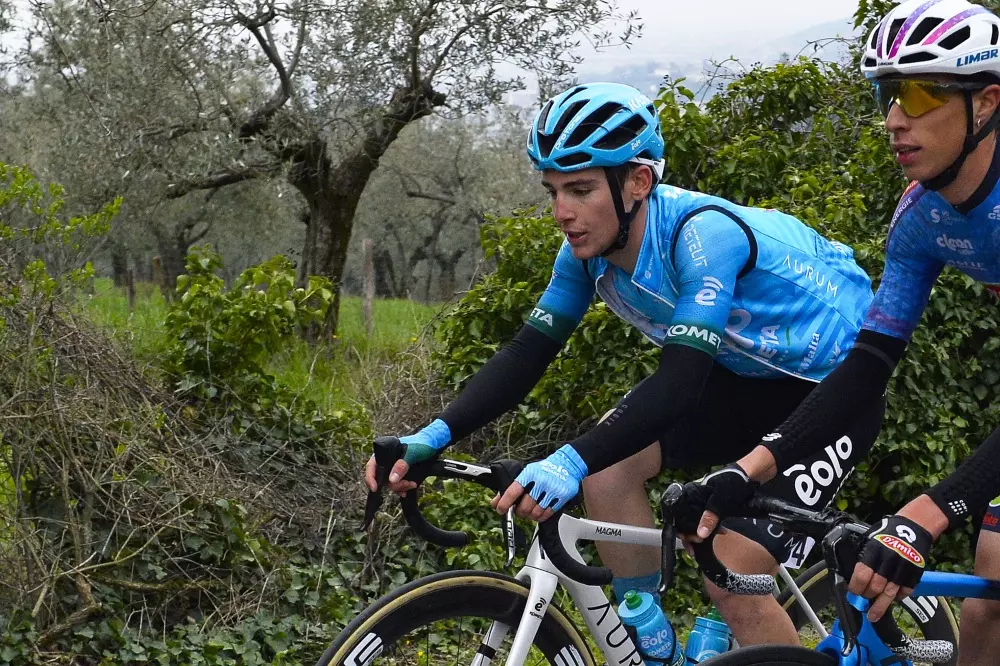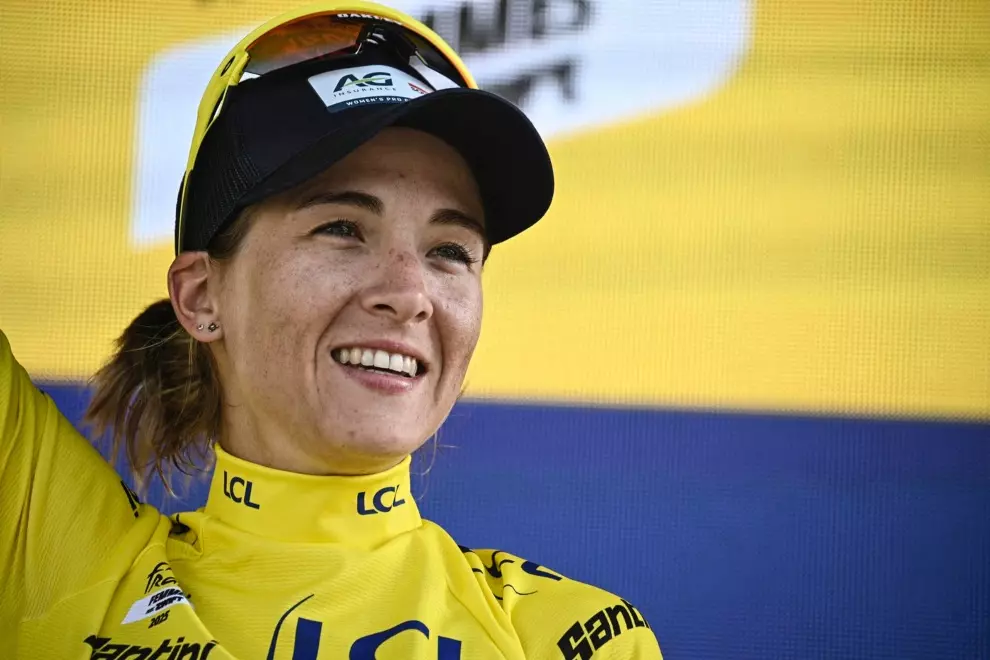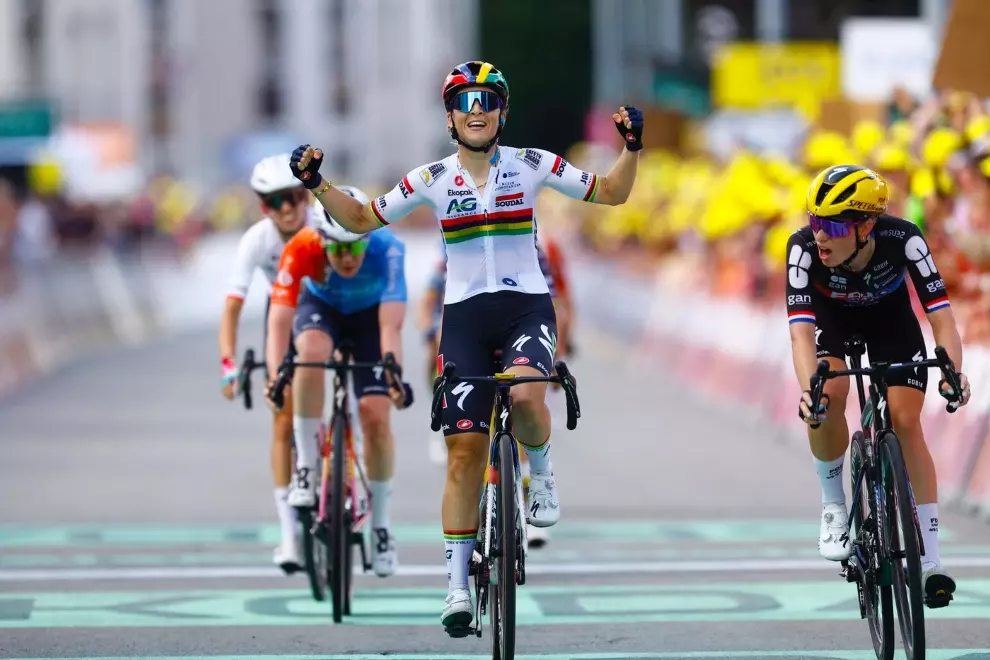First, we interviewed the team’s logistics manager Edurne Bello about his responsibilities and the challenges that stage races pose.
What are the key responsibilities of your role as a logistician for a professional cycling team during a Grand Tour?
The race organizer usually provides hotel accommodations but the team is responsible for travel arrangements. I make sure the team’s logistics are under control. This involves coordinating the arrival of riders and staff at the start hotel, with riders typically flying and staff driving team vehicles. For Grand Tours, it’s necessary to consider the types of stages and plan the transportation of the entire team. In our case, we head to the Giro d’Italia with a bus, a truck, two vans, and six Škoda cars.
What is the most challenging aspect of organizing the team’s logistics for a multi-stage race?
The trickiest part is managing the transfers between stages, as many days involve long journeys. It’s essential to coordinate these trips well so riders can get as much rest as possible. Together with the team staff, sports directors, mechanics, and masseurs, we streamline the process after each stage. There’s always a vehicle designated to handle hotel arrangements and ensure everything is ready when the rest of the staff and riders arrive. This includes check-ins, reserving parking spots, and preparing meals for the riders upon arrival.
Can you give us an example of an unexpected logistical challenge that you have successfully resolved during a previous race?
Inevitably, unexpected situations arise that require adaptability. For instance, when a rider withdraws from a race due to a crash, we need to plan their return home for a speedy recovery. On one occasion, we had a punctured wheel on a Škoda. Thankfully, our mechanics and the assistance of other teams helped us resolve the issue, ensuring the car was ready before the stage began.
Next, we talked to the head mechanic Iván Moya about equipment and fixing mechanicals during a Grand Tour.
How do you collaborate with riders to customize their bikes and equipment to their individual preferences and physiological needs?
As mechanics, we assist riders with groupsets and other bike components but it’s the rider’s own biomechanics that influence their power output the most. It’s not very common that we give advice on the components to try to achieve optimal performance on the bike.

What is the most difficult mechanical issue that you had to resolve during a race?
During a race, complex mechanical issues can’t be fully repaired, as quick solutions are essential. In many cases, it’s more efficient to switch to a spare bike. In the evening at the hotel, we sort everything out. However, sometimes we need to change a chain, a wheel, a groupset, a shoe cleat or address other unexpected issues.
What type of equipment and how many replacement parts do you carry with you during race days?
For major races like the Giro d’Italia, we have two Škoda support cars. We carry a tool case containing everything needed to assemble a complete bike. In case of any problems during the transfer to the start, before the start, and then during the race, each car is equipped with both spare bikes and three sets of wheels for punctures. Additionally, the masseurs’ car carries two more wheels in case they’re needed. A spare transmitter is also provided in case of failure or breakage.
Are there any innovative equipment choices or modifications that your team has made to gain a competitive advantage in the race?
We constantly search for marginal gains, no matter how small. However, the UCI heavily regulates this area, leaving little room for significant changes. We focus on achieving the lowest weight and maximum aerodynamics, and collaborate with our technical sponsors, who provide us with the best materials.
We also talked to one of the team’s Soigneurs Lucio Dominguez who is an experienced masseur at the same time.
What are the primary responsibilities of a Soigneur in supporting the well-being and recovery of riders during a Grand Tour?
Soigneur’s main responsibility is to create an environment of comfort, care, and confidence for every cyclist on the team. By observing and communicating with the riders and applying various massage and recovery techniques, we aim to ensure the riders achieve maximum performance.
What do you do to establish trust and rapport with riders? Are there situations where you help them overcome the emotional challenges of the race?
During massage sessions, it’s crucial to provide attentive care to the cyclist, where active listening plays a significant role. There are moments when riders open up and share their thoughts during a massage. In these situations, a Soigneur has the dual responsibility of encouraging, motivating, and offering advice to help the rider continue working towards success.





